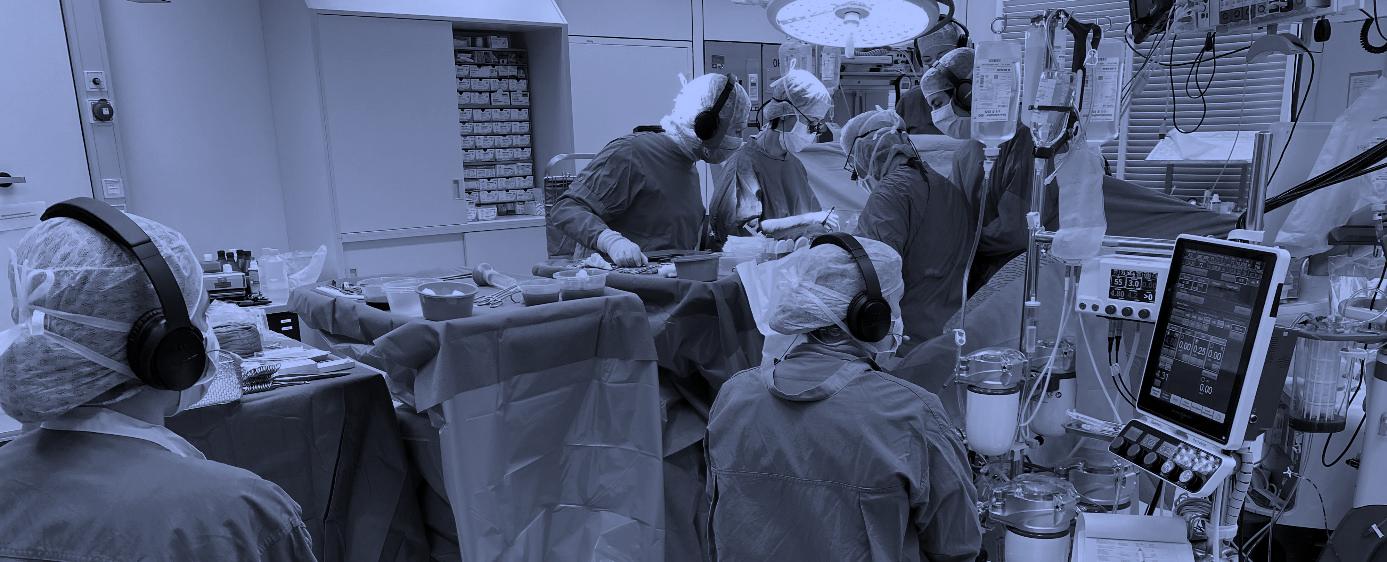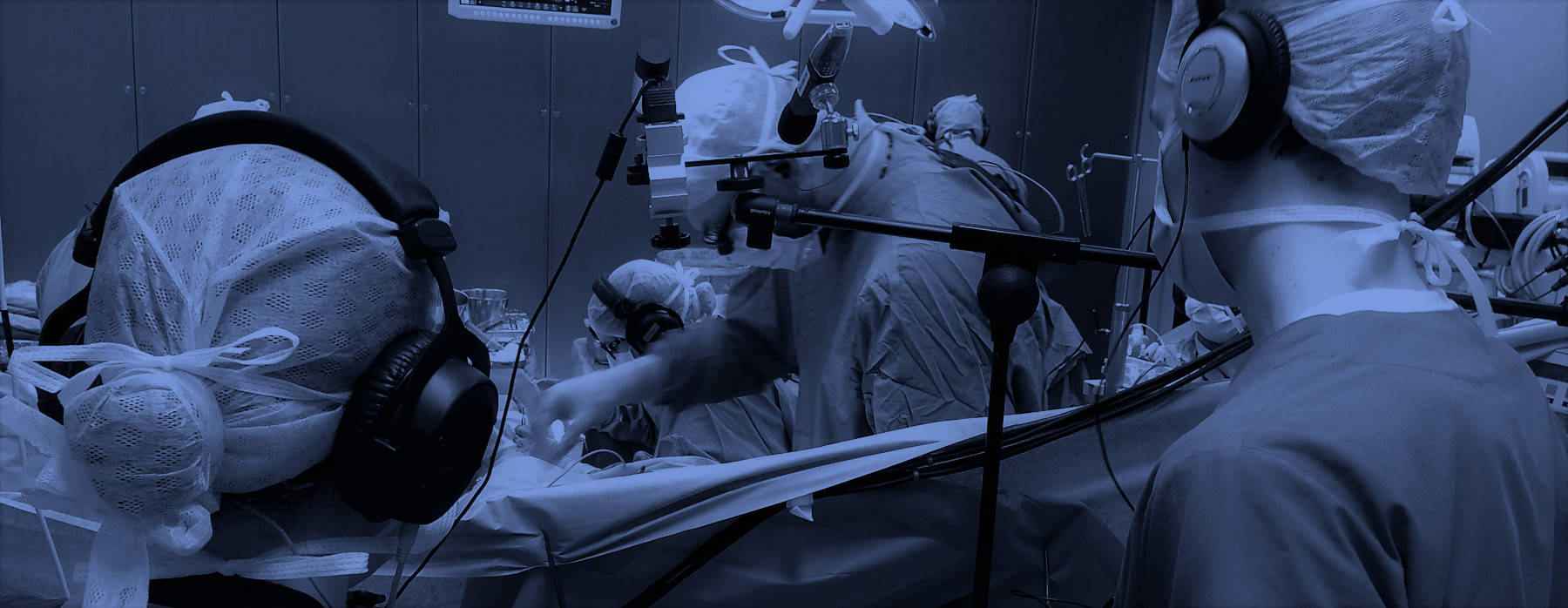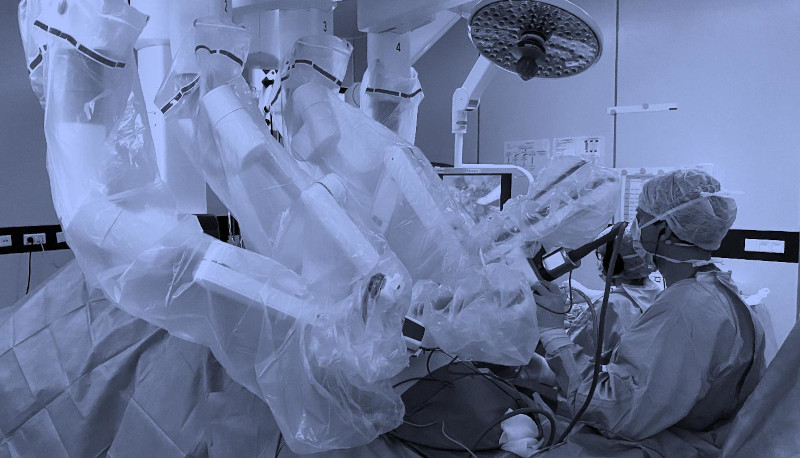
Our modern operations have become increasingly complex, as have our instruments. Our operating theatres have evolved into high-tech environments. For a long time now, a surgical procedure has no longer been a "one-man show" of the 1st surgeon. It requires a highly qualified team with various special tasks, which can only ensure the maximum possible success in an optimally functioning and interacting cooperation in a well-coordinated environment.
The personnel must be highly specialised and highly trained - because the planned intervention at the operating table as well as the control of the highly developed operating technique requires a high level of knowledge and above all a lot of experience. We are still far from "Medicine 4.0" (the Internet of medical things). The necessary coordination between human actions in the interaction of the various special tasks in the operating theatre - also essentially the control of the operating technology and much more - is still carried out by verbal communication. It is imperative that we exchange information, observe and perceive what is happening. We have a fairly precise plan in our heads. The path to the goal, which we want to achieve with the patient on the operating table, is constantly being readjusted. We have to talk - sometimes a lot of talking and exchanging information, giving and receiving instructions. The machines do not (yet) take this away from us and will hopefully never do it extensively.
With increasing levels of technology and the resulting need for personnel, it has become loud in our operating theatres. Several quiet machines add up to a considerable level according to the laws of acoustics and sound propagation. The difference to the noise load on motorways no longer exists. Even if we have more or less got used to it, this is neither beneficial to our claim to the best work results, nor does it serve our health in the long term.
It is scientifically proven that intellectually demanding work is sensitively disturbed by noise. Not only mental stress is sufficiently described, but also measurable disturbances of coordination, our power development and especially fine motor skills. We cannot tolerate this in the operating theatre. But due to a lack of solutions, we had to accept this for years.
For transmission-safe verbal communication between people, we need an environment that is as quiet as possible. For example, we know from communication research that we have to communicate 12 dB louder than the ambient noise so that especially the "sibilants", which are important for comprehensibility, do not get lost. But 10 dB more is twice as loud! Speaking louder only works up to about 80 dB, then the roar is of little help (we know this from conversations in noisy surroundings, such as in discotheques, at concerts, next to chainsaws, ...)
Now it has not only become louder, but we also have an increasing amount of information to process. We are already partly stretched beyond our capabilities. We have all experienced regularly in the operating theatre what information overload can mean. We have reached the limits of an overload.We humans can process a maximum of 7 (± 2) units of information in real time ("The magical number seven, plus or minus two". Miller 1956). For this we use a specialised form of short-term memory (working memory model, Baddeley 2000).
If we overload our working memory, we slow down or generate more and more errors. This is not conducive to our common goal of guaranteeing our patients the best possible outcome with the greatest possible safety.

The Silent Operating Theatre Optimisation System offers each team member a technically generated quiet listening environment. Only the information and important signals necessary for their work are made available to them. Automatically adapting music masks the residual noise level and creates a productive work performance.
The SOTOS offers a new, comprehensive approach to solving this problem and is being continuously developed further. It is becoming more and more complex "under the bonnet", but also increasingly user-friendly.
SOTOS is an important assistance system in the highly technical operating theatre, but due to its relation to the patient, it is not a medical product.
Studies (heart surgery and DaVinci Urology of the UMG) have shown a (highly) significant advantage in terms of attention, fatigue, exhaustion, concentration and heart rate variability.
In addition, the number of words spoken at the operating table was halved in a highly significant quieter working environment. The air extracted from the operating field was thus lower in germs (fewer colony-forming units, very quiet speech and, above all, less speech leads to a comprehensible hygiene advantage at the table, also a risk of infection due to significantly reduced particle emission at the operating table (e.g. germs of the oral flora - corona viruses).

- significantly less and highly significant quieter talking is done at the operating table - this results in a measurably lower germ load through the air in the operating field.
This results in fewer wound infections and leads to a reduction in costs, e.g. by avoiding very long stays, re-operations, and the like.
- With the data collected in the study mentioned below, corona particles in the air can also be reduced by using SOTOS, which ensures an otherwise unattainable level of infection protection in a necessarily communicative environment.
Precise professional communication over large spatial distances is easily possible
- There are always situations where the surgeon has to communicate with the outside via telephone during the operation (RS with pathologists regarding frozen section examination results, RS with radiologists, other medical colleagues, ...). This leads to an interruption of the workflow, costs time and generates an additional demand for sterile material (possibly gown and glove changes).
- Communication with assistant operating theatre nursing staff (jumpers) is significantly improved. Jumpers can be available via SOTOS in several operating theatres at the same time, and can also be corrected ad hoc via a standing radio link in the event of changing requirements from a sterile zone not located in the operating theatre (personnel savings).
- Optimisation of work processes by means of SOTOS leads to a decrease in staff traffic in and out of the operating theatre while the operating theatre is in operation.
- Operating theatre management can be integrated into process optimisation in a way that was previously impossible.
- The Basic and Extended versions of SOTOS are currently an isolated solution for an operating theatre. However, it can be expanded into a SOTOS network and "married" with video solutions without having to discard the current hardware. Connection of lecture halls, conference rooms, chief physician's offices, ... This improves the effectiveness and performance of expensive, highly specialised staff.
- In critical environments, SOTOS is easy to set up redundantly. (security aspects)
- SOTOS is constantly being further developed
- SOTOS supports radiation protection needs by ensuring verbal communication over spatial distances. Doors have to be opened much less frequently (significantly improved communication with control rooms).



